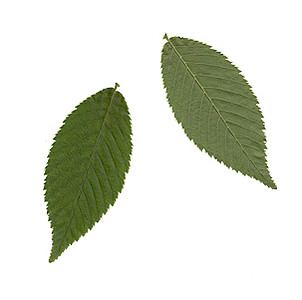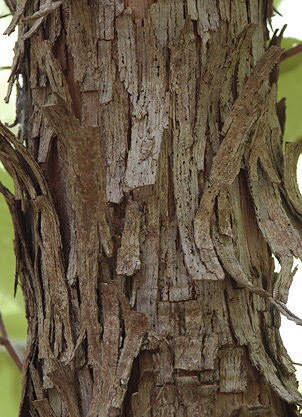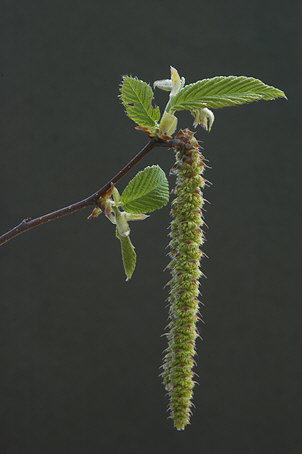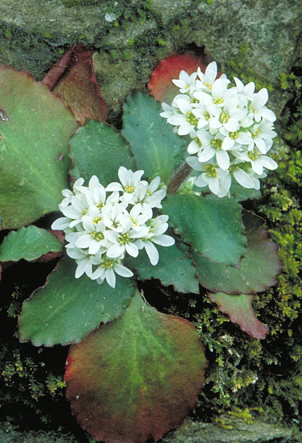| |
|
| |
 |
| |
Eastern Hophornbeam Leaf |
Identification:
The leaves are simple,
alternate and
doubly-serrate, darker on the upper surface
and lighter below. The veins branch one to several times as
they approach the margin. Each leaf is about 3 inches long.
Note the alternate branching pattern on the tree.
| |
|
 |
|
|
Eastern Hophornbeam Bark |
The bark of the Eastern Hophornbeam
is reddish brown or bronze
when young, becoming gray-brown, shredded and flaky as the tree
ages. On older trees the bark appears quite similar to the
Eastern Redcedar.
| |
|
| |
 |
| |
Eastern Hophornbeam Catkin |
The flowers of the Eastern
Hophornbeam appear in late March and early April. The species
is monoecious, with male and female catkins appearing on the same
tree. The male catkins are shown at right with the emerging
leaves.
Other Uses
and Lore:
The
genus name, Ostrya, is from the Greek meaning a tree with
hard wood. Another name for the tree is “Ironwood.” In fact, the
eastern hophornbeam’s wood is harder than oak, ash, hickory or
persimmon. Only dogwood is harder. In times past its wood was used
for the handles of mallets and axes. The fruits provide food for
northern bobwhite, white-tailed deer and eastern cottontail rabbits.
The Trail From
Station Four to Station Five
 |
| Early
Saxifrage |
It is a
relatively short distance from Station Four to Station Five.
Look among the limestone outcrops for wildflowers like Early
Saxifrage. In times past this wildflower was used to treat
inflammations. The genus and family names literally translate
to "stone breaker" and is a "doctrine of signatures" name given a
European species that was thought to dissolve kidney stones.
|

